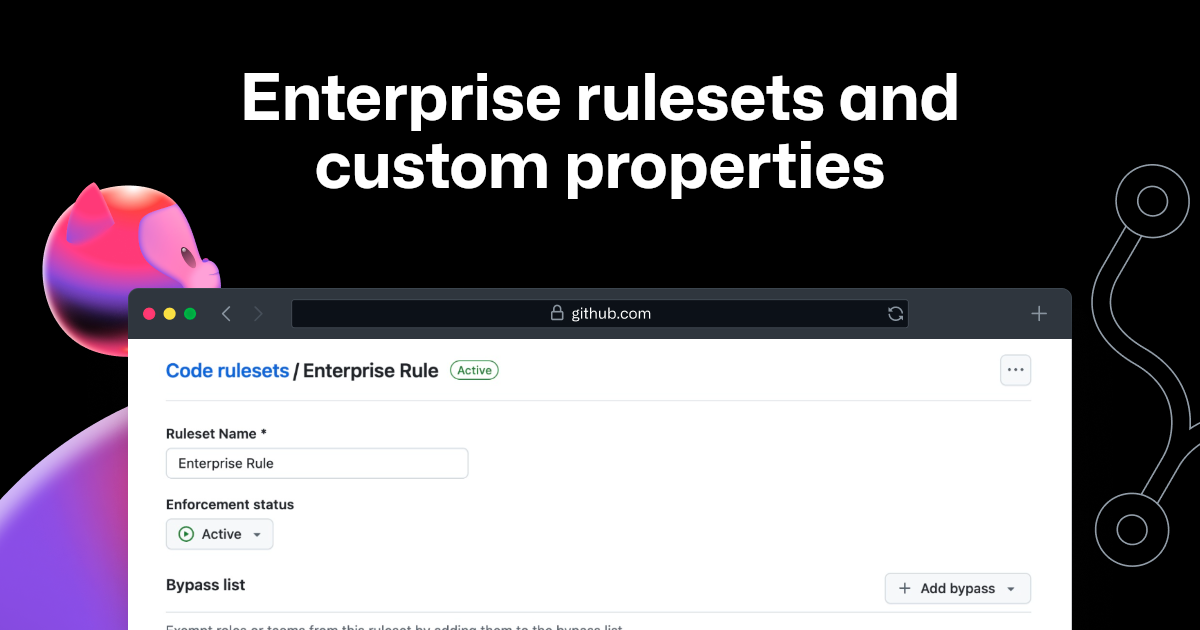Enterprise custom properties, enterprise rulesets, and pull request merge method rule are all now generally available

Enterprise custom properties and enterprise rulesets are now generally available, further improving the governance features for GitHub Enterprise customers.
Enterprise custom properties
With enterprise-level custom properties, you can now enrich your repositories with metadata across your entire enterprise. This ensures consistent properties across organizations without the need for manual synchronization. By sharing a common namespace, enterprise and organization properties prevent confusion when searching or targeting rulesets with properties. If you’re already using custom properties in your organizations, you can also promote those properties to the enterprise.
Learn more about enterprise custom properties in our documentation.
Enterprise rulesets
Enterprise-level rulesets enforce consistent code governance rules, helping ensure thorough reviews of critical repositories with pull requests, requiring actions workflows, protecting important locations from unauthorized pushes, and more. Rule insights and push rule bypasses are also available at the enterprise level, providing complete visibility into the rulesets.
Learn more about enterprise rulesets in our documentation.
We look forward to seeing how you leverage these new capabilities to streamline your workflows and maintain high standards of code governance.
Pull request merge method rule
The new pull request merge method rule is now generally available using whatever method is suitable for your branches, such as ensuring that all changes are squashed when merging to the default branch while rebasing into feature branches. This simplifies your workflows, ensuring consistency across your branches.
The merge method rule is available for rulesets at the repository and organization level. You can use this rule to choose what merge methods are allowed on the targeted branches when merging pull requests from the user interface or APIs. You can choose between merge commit, squash, or rebase.
Learn more in our documentation and join the discussion within the GitHub Community.